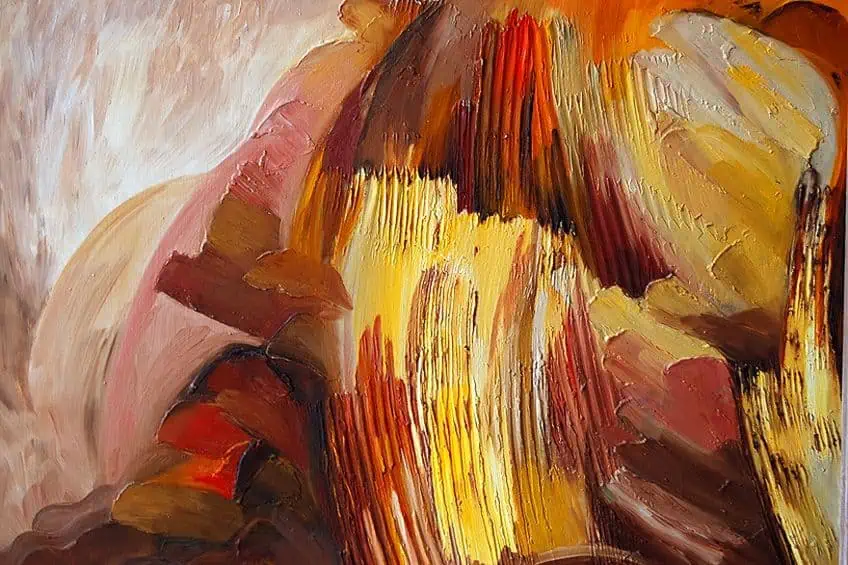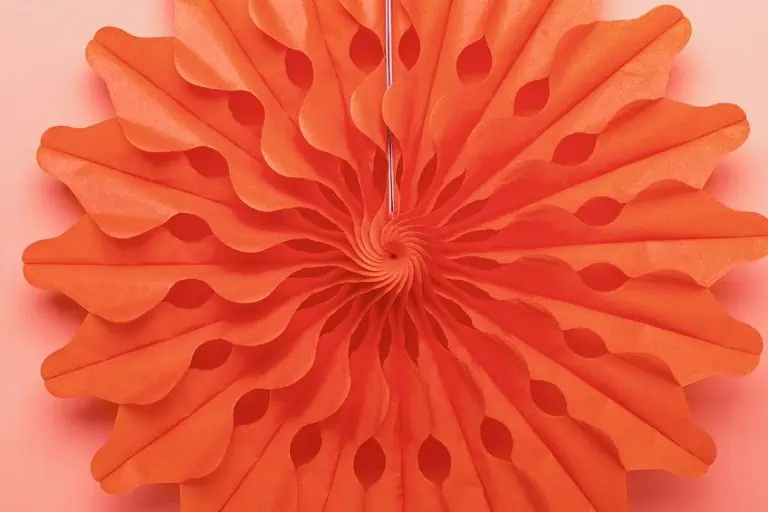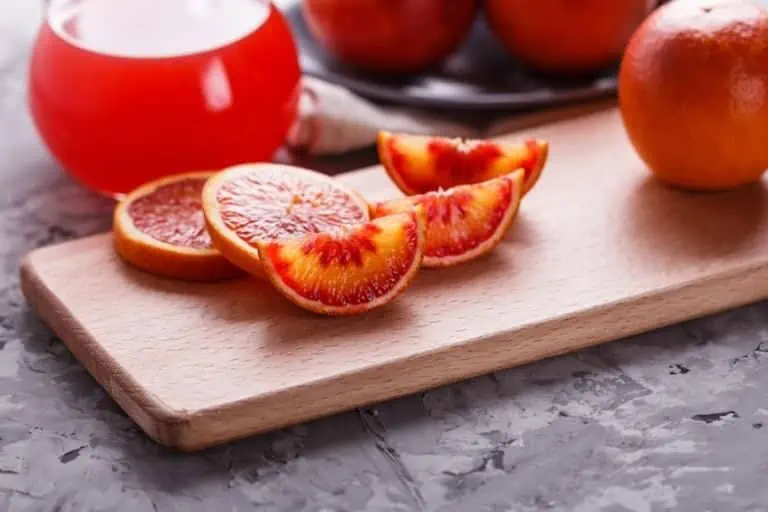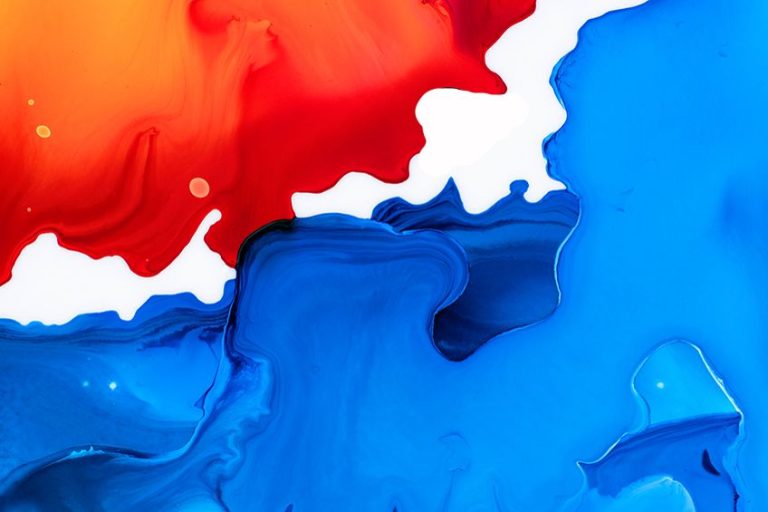Burnt Sienna Color – How to Make and Use Burnt Sienna Paint
This post may contain affiliate links. We may earn a small commission from purchases made through them, at no additional cost to you.
Burnt sienna conjures up images of warmth, earth, and sand. The color ranges from a reddish-brown to a yellowish red and the raw sienna is commonly used in glazes and stains. The sienna color is also perfect to use with other natural elements like wood or leather as all the natural earth tones work well together. So, let us now go into more detail about the amazing burnt sienna color.
Table of Contents
All About the Burnt Sienna Color
So, what is the difference between sienna and burnt sienna? When was this pigment discovered and used and did famous artists use it in their artwork? Read further to find out the answers to all these questions and more.
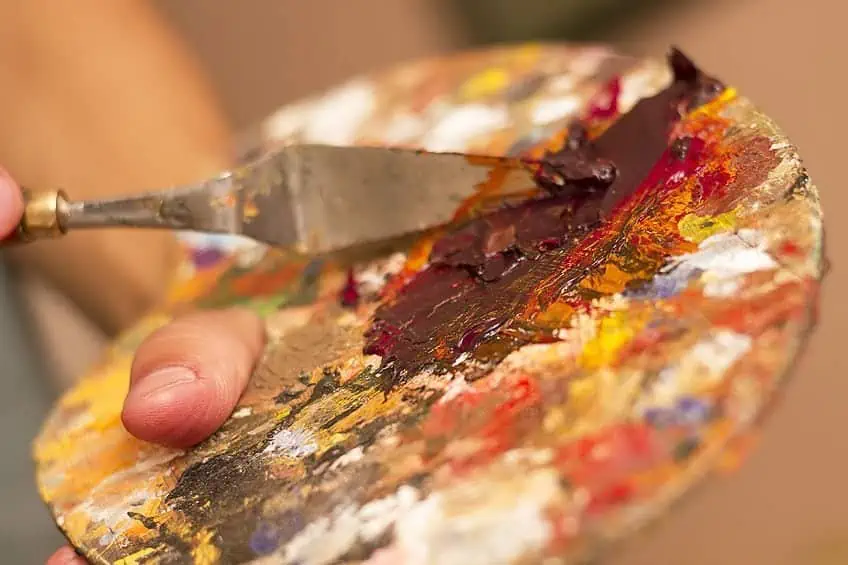
What Color Is Sienna?
Sienna is an earth pigment that in its natural form is more of a yellowish-brown and is also known as raw sienna. The color comes from the iron oxide as well as manganese minerals present within the pigment. This raw sienna is then heated, and the iron oxide dehydrates, which then partly changes into hematite that gives the pigment its darker burnt sienna color. The burnt sienna color is darker and a deeper reddish-brown.
The burnt sienna color can be placed in the same color category as terracotta and red clay as all of these have reddish-brown.
Sienna Color: A Brief history
The word sienna is of Italian origin and means “sienna earth”. Siena itself is an actual city in Italy where the pigment was mined and manufactured during the Renaissance period and has since become an extremely popular pigment used by many artists. The name “sienna” was recorded in English way back in 1760.
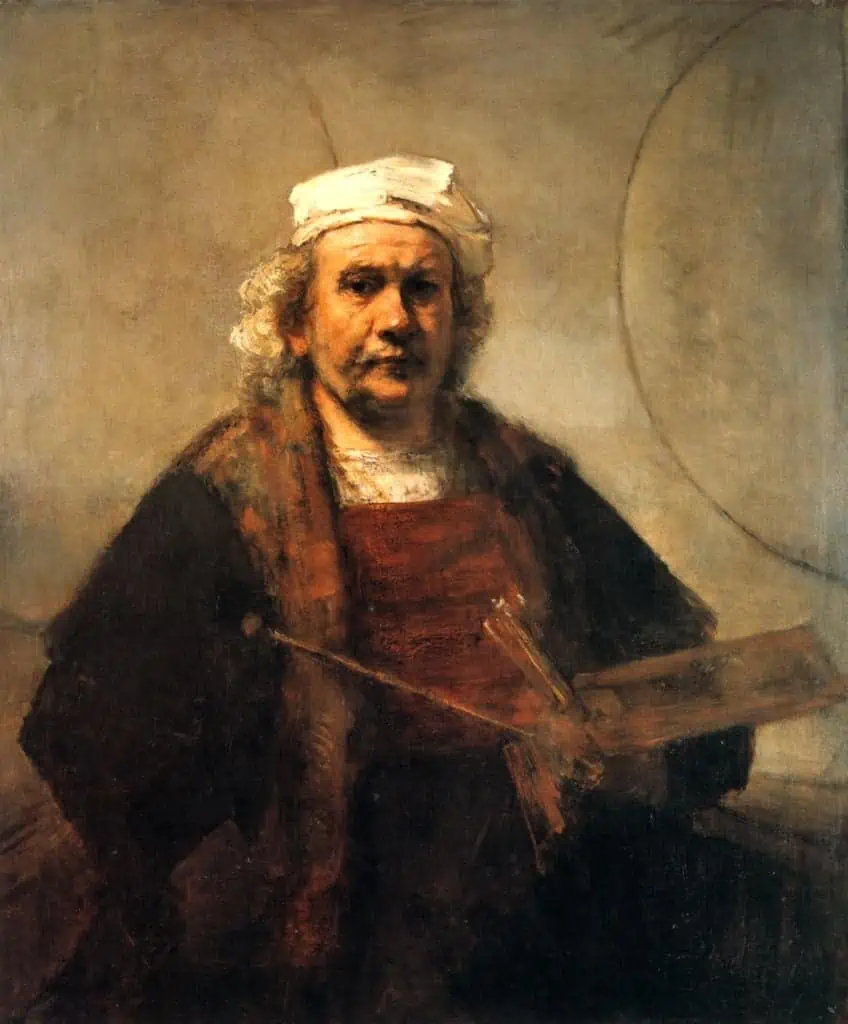 Self-Portrait with Two Circles (1665-1669) By Rembrandt; Rembrandt, Public domain, via Wikimedia Commons
Self-Portrait with Two Circles (1665-1669) By Rembrandt; Rembrandt, Public domain, via Wikimedia Commons
The sienna pigment is one of the original pigments, along with umber and ochre that was used many years ago in paintings on cave walls and was also used by the Ancient Romans. There were also other names for the pigment including terra Rossa, which was recorded by Giorgio Vasari who was a popular painter and author of painting techniques during the Renaissance period. Other names include terra Di Siena and terra gialla. Many artists used sienna as well as yellow ochre and umber in their paintings.
- Self-Portrait with Two Circles (1665 to 1669) by Rembrandt
- The Incredulity of Saint Thomas (1602) by Caravaggio
- The Battle of Marciano (1511 to 1574) by Giorgio Vasari
Unfortunately, the supply of sienna became less and by the 1940s, it was almost at an end. Today, Sienna is obtained from other Italian cities like Sicily or Sardinia. Other sources then included the Appalachian Mountains and areas in Germany and France. Of course, due to advancements, much of the pigment is now synthetic. You should be able to check the paint label to see if it is from a natural source or if it is synthetic.
Pigments are usually given a code, so if you are looking for a natural burnt sienna, it should read PR-102.
Sienna Color Tones
The sienna color is used for a variety of shades today, which are offered by many different paint companies. For example, you might come across dark sienna, however, this is simply a name and does not refer to the natural earth sienna. Below are a few more different sienna color tones.

Burnt Sienna
As we have already discussed, burnt sienna is obtained from the earth pigment sienna, which is then heated to produce the burnt sienna color, a dark reddish-brown. The burnt sienna pigment has also been called red ochre, terra rossa, and red earth.
The color is associated with earth, gardening, and anything natural.
| Sienna Shade | Sienna Color Hex Code | CMYK Sienna Color Code | RGB Sienna Color Code | Sienna Color |
| Burnt Sienna | #e97451 | 0, 50, 65, 9 | 233, 116, 81 |
Dark Sienna
This color can be classified as an extremely dark shade of red. The color is also quite popular and used extensively on an American Television show known as The Joy of Painting, which is hosted by Bob Ross.
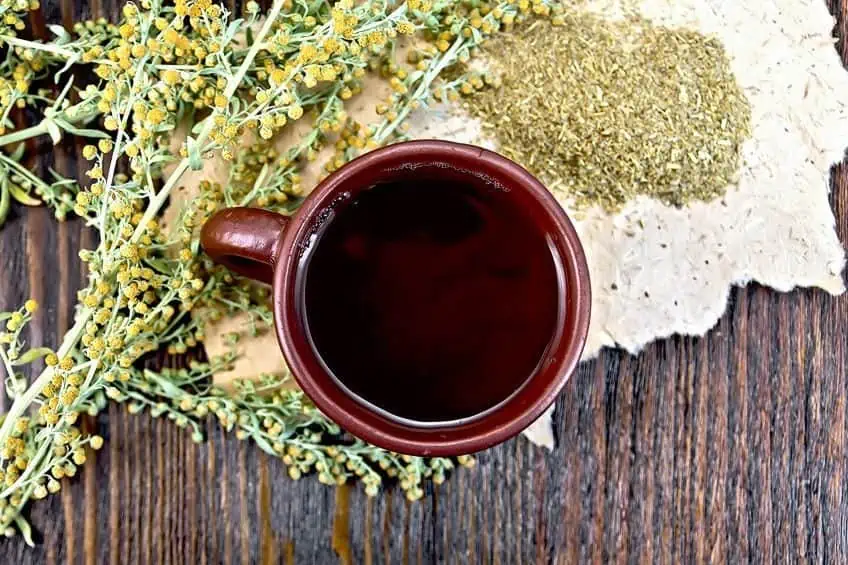
| Sienna Shade | Sienna Color Hex Code | CMYK Sienna Color Code | RGB Sienna Color Code | Sienna Color |
| Dark Sienna | #3c1414 | 0, 67, 67, 76 | 60, 20, 20 |
Raw Sienna
The raw sienna pigment is what you get before you put it through any process. The color is more of a yellow-brown and turns darker, to burnt sienna when it is heated. Raw sienna color paint is more transparent than yellow ochre, which is more opaque.
However, all of these colors can be classified as earth tones.
| Sienna Shade | Sienna Color Hex Code | CMYK Sienna Color Code | RGB Sienna Color Code | Sienna Color |
| Raw Sienna | #9a6200 | 0, 36, 100, 40 | 154, 98, 0 |
Bright Sienna
This is a lighter and brighter version of sienna, with about 60 percent lightness and saturation. Bright sienna may also be placed within the orange family of colors as it has an orange-brown appearance. A nice addition to a sienna color palette.

| Sienna Shade | Sienna Color Hex Code | CMYK Sienna Color Code | RGB Sienna Color Code | Sienna Color |
| Bright Sienna | #d68a59 | 0, 36, 58, 16 | 214, 138, 89 |
Sienna
This is a darker and more brow version when compared to the raw sienna. This color also contains less of a red undertone when compared to the burnt sienna. Using it alongside blue should make it stand out more.
A shade of red, yellow, and sienna should make a nice analogous color scheme.
| Sienna Shade | Sienna Color Hex Code | CMYK Sienna Color Code | RGB Sienna Color Code | Sienna Color |
| Sienna | #a9561e | 0, 67, 83, 47 | 136, 45, 23 |
How to Make Burnt Sienna
The first and easiest option to create a burnt sienna paint color would be to simply go out and purchase a tube of burnt sienna from the art shop since it is a popular choice by many artists. However, if for some reason, you do not have a tube of paint of this color, why not make it up yourself? All you need are your primary colors. The color will add a nice warm and natural color to paintings and can be used to help paint trees, mountains, scenery, and skin tones.

Mixing Purple and Orange
One of the “rules” when mixing paint, is to not combine your primary colors. However, there comes a time when this is exactly what you want to do. Basic knowledge of color theory can help in this matter. Most of us already know the primary as well as the secondary colors, then you have your tertiary colors. Now there is some debate on this as some have different views on tertiary and intermediate colors. In this case, tertiary colors are a combination of two secondary colors.
When it comes to burnt sienna, this color can be formed by combining purple and orange.
Now you can use purple and orange from a tube and adjust the color by adding white or more purple or orange to get different shades. To get the best and most accurate results, it is a good idea to start from scratch and use your primary colors. Many brands of paint differ in their paint formulas, so you might get different results if you use the tubes of paint. But if you do use purple and orange paints, try using the different shades and mix in various ratios to create a burnt sienna color palette.
Mixing Primary Colors
An advantage of using only the primary colors is fewer paints. So, when you travel, you only have a few paints to take with you, making it easier and lighter to move around. Place your primary paint colors, which are red, yellow, and blue, onto a mixing palette. Take a little yellow and then mix in some red to give you a yellow-orange color. You can then add a small amount of blue, which should darken the mixture slightly, forming a basic burnt sienna color.
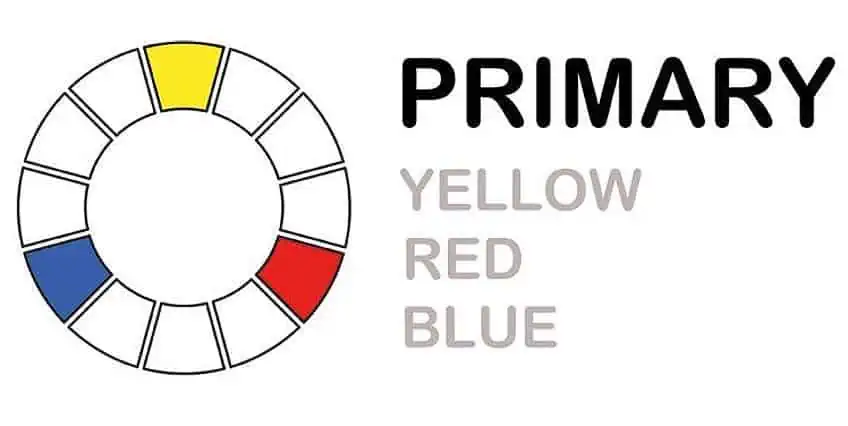
Always use more yellow and red to make the burnt sienna color. You can then adjust the color by mixing in a little more red and then a small amount of orange. You can carry on adding small amounts of yellow, red, and blue until you reach the burnt sienna paint color you are looking for. For example, consider mixing a bright yellow like gamboge with permanent rose, and then adding a small amount of cobalt blue to create a burnt sienna color.
Decorating With Burnt Sienna
A sienna color is mostly associated with a rustic look and provides an earthy natural look, which is why it works well with natural elements like leather, brick, and wood. Burnt sienna also works well with other warm colors like yellows and oranges. However, the color also stands out and looks good with cooler colors like your shades of green and blue colors.
To create a more elegant look, you can consider pairing burnt sienna with white, gray, coral shades, or even black.
If you do not want to go all out with painting an entire room, use it as an accent color by painting a wall. If you do decide to go all out with an entire room, make it stand out with white trim. When deciding on a color, you should consider all shades of burnt sienna, as a deeper or darker shade can be just as appealing. Otherwise, add beautiful, warm color to a soft neutral or white room, simply add in a burnt sienna color couch, painting, or other accessories.
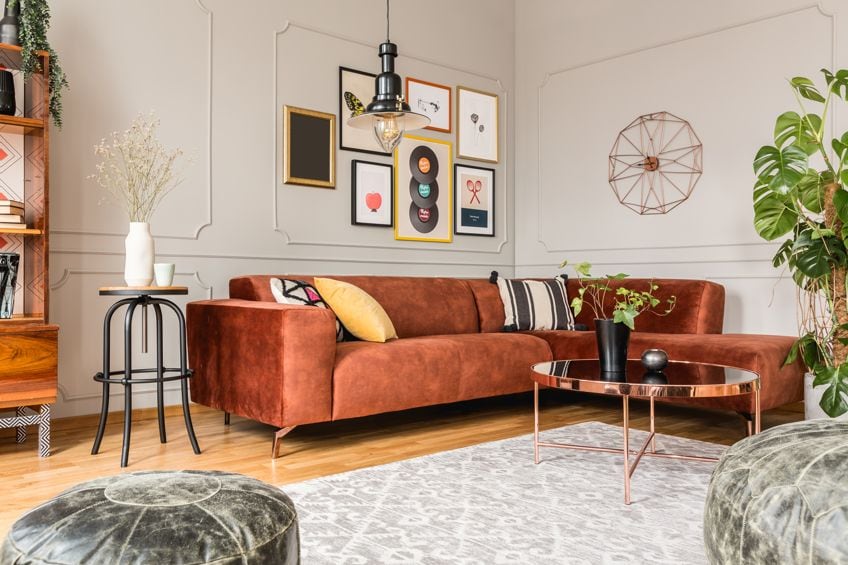
One extremely simple way of incorporating burnt sienna into a room is to use all kinds of wall art from abstract to something like a desert landscape. You do not have to go all out using burnt sienna, you can strategically place things like the paintings or pillows, a throw, or a rug in a room. Consider using burnt sienna drapes, which can add a nice earthy tone to the room without overwhelming it. Try using a piece of lighter fabric, so it does not seem too heavy. The added color will easily warm up a white, gray, or taupe color palette.
Burnt sienna is a well-liked and used paint color for landscapes, portraits, and other art pieces. However, the color can also successfully be used in the home to create a natural, warm, and welcoming atmosphere.
Frequently Asked Questions
What Is Burnt Sienna?
Sienna is a natural earth pigment that contains iron oxide, which gives it a yellow-brown appearance. This pigment is known as raw sienna. When you add heat to this pigment, it darkens it to a dark red-brown color, which is known as burnt sienna. This has been a popular pigment used over the years in many famous art pieces.
What Two Colors Can Be Used to Create Burnt Sienna?
Knowing color theory should help you out with the mixing of colors and what happens. When you combine two secondary colors, you will create a brownish or muddy color. The two best colors to use to create burnt sienna would be orange and purple.
How to Make Burnt Sienna?
You can use different types of orange and purple paints to create various shades of burnt sienna. You can also take all three primary colors and mix them in different ratios to produce a burnt sienna color.
Is Burnt Sienna a Warm or a Cool Color?
Even though burnt sienna can have a little of all three of the primary colors present, it is considered a warm, earthy, and natural color. The color has been used in many paintings and especially landscapes but can also be used to create a warm and natural feel in the home.
Duncan graduated with a diploma in Film and TV production from CityVarsity in 2018, after which he continued pursuing film while taking on a keen interest in writing along the way. Since having graduated, he began working as a freelance videographer, filming a variety of music videos, fashion and short films, adverts, weddings and more. Throughout this, he’s won a number of awards from various film festivals that are both locally and internationally recognized. However, Duncan still enjoys writing articles in between his filming ventures, appreciating the peace and clarity that comes with it.
His articles focus primarily around helping up-and-coming artists explore the basics of certain colors, how these colors can be paired with other shades, as well as what colors are created when you mix one with another. All while relating these shades to historically significant paintings that have incorporated them into their color palette. As a lover of the arts himself, he takes great interest in the Renaissance era of paintings, an era that has directly inspired many of his favorite films.
Learn more about Duncan van der Merwe and about us.
